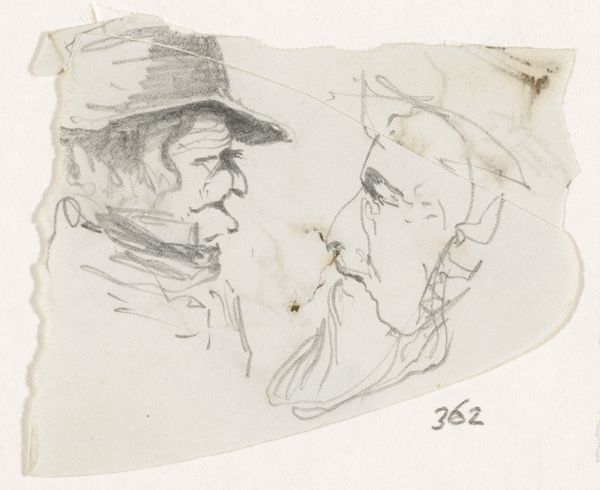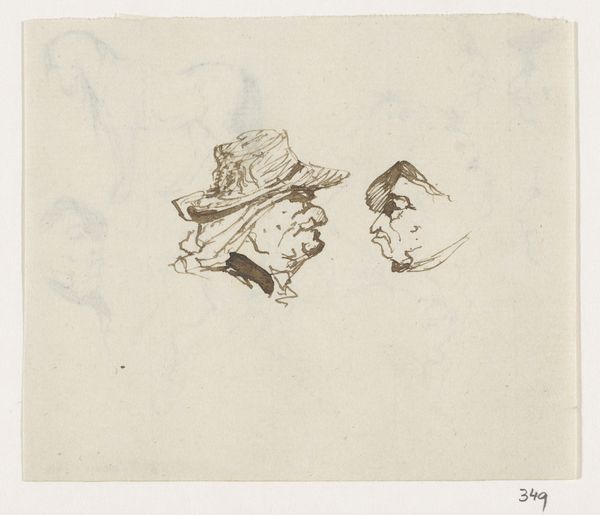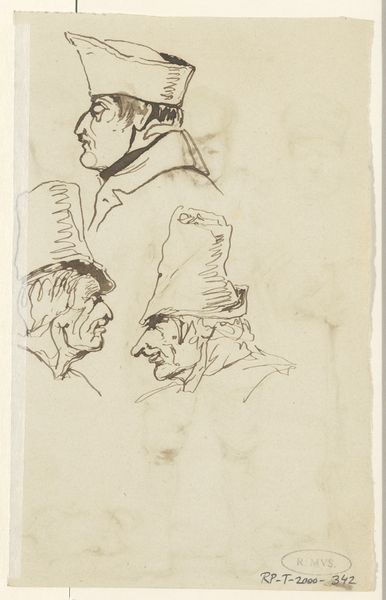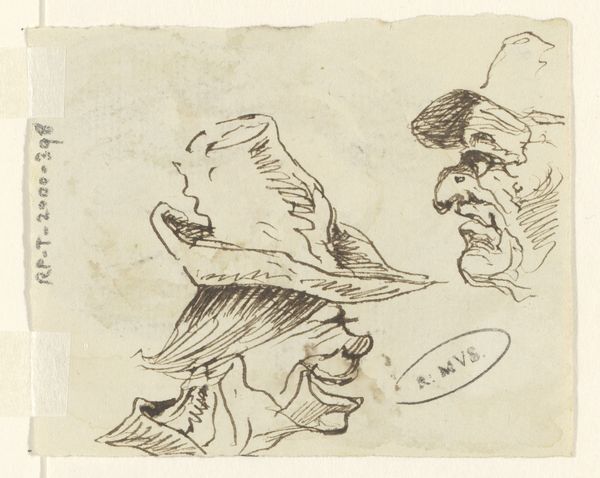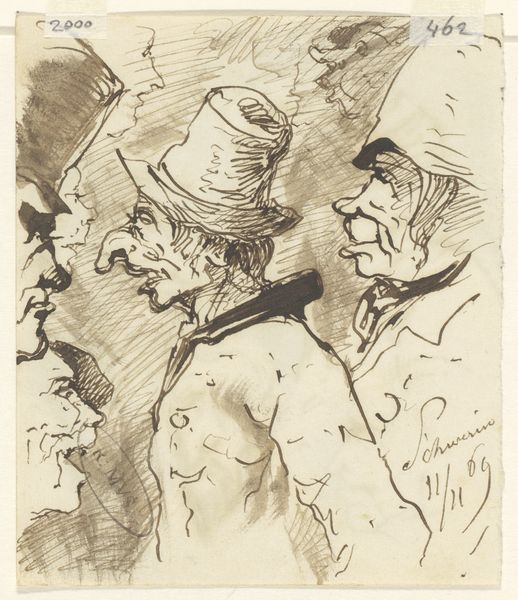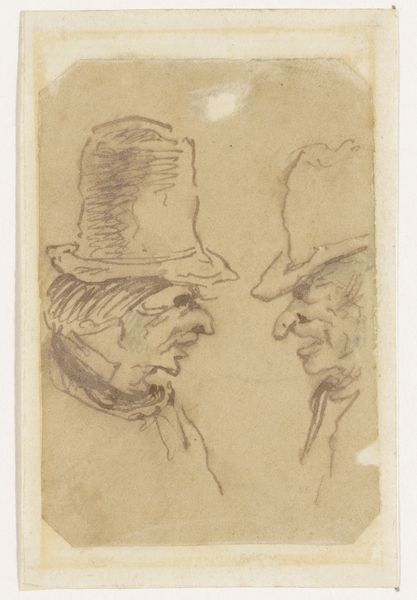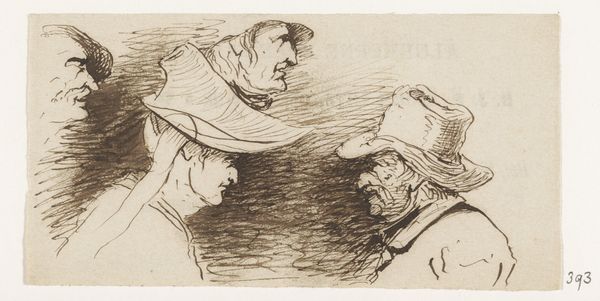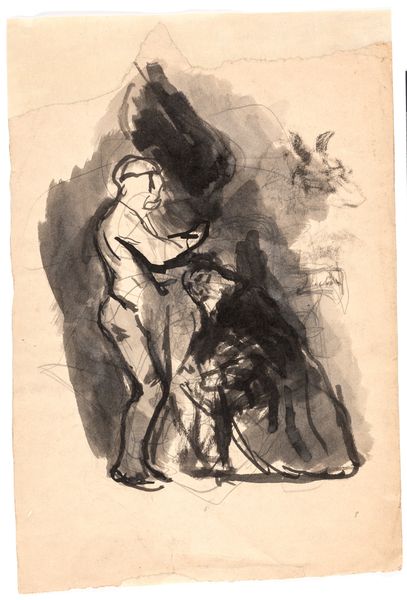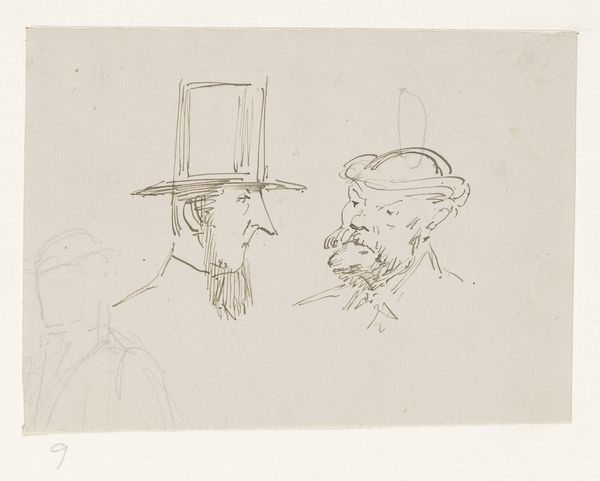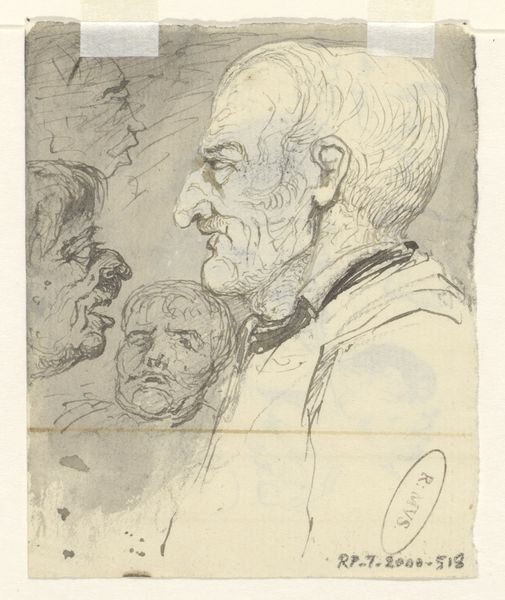
drawing, ink
#
portrait
#
drawing
#
imaginative character sketch
#
self-portrait
#
quirky sketch
#
cartoon sketch
#
figuration
#
personal sketchbook
#
ink
#
idea generation sketch
#
sketchwork
#
ink drawing experimentation
#
sketch
#
sketchbook drawing
#
storyboard and sketchbook work
#
sketchbook art
#
realism
Dimensions: height 104 mm, width 68 mm
Copyright: Rijks Museum: Open Domain
Curator: This is "Drie koppen," or "Three Heads," a drawing in ink by Johannes Tavenraat, dating from about 1840 to 1880, held here at the Rijksmuseum. What are your first thoughts? Editor: They seem burdened, certainly… particularly the face centered at the bottom. There’s a weariness etched into the lines. Curator: Well, notice the quick, almost frantic, linework. You can almost feel Tavenraat experimenting. The support is paper, of course, likely a common, readily available type, hinting at the drawing’s role maybe as preparatory, a moment of sketching before a larger project? Editor: Perhaps, but these faces… they seem to carry a specific weight. That top hat, for instance. In one reading, it might denote aspiration and upward mobility, but there’s also something slightly…off about it, perhaps hinting at a satire of social climbing. Curator: You're focusing on the attire and implied narrative. But consider how the ink bleeds slightly into the paper. What type of ink was he using? What were the environmental conditions of his studio when he worked on this? I bet the consistency of the ink played a role in the rapid, sketch-like quality. Editor: True, the sketch-like quality could certainly stem from the ink, the technology for distribution… However, if we look at the positioning of the faces, there seems to be an internal conversation or conflict visualized here, a symbol perhaps for different states of mind. Curator: That’s an interesting angle, given the era. Though, I'm also thinking of the economics of artmaking at the time and how Tavenraat might have used readily available, cheaper paper precisely for studies like this. Material scarcity drives artistic innovation! Editor: Indeed, but artistic innovation also arises from delving into the human psyche and, as I read it, this piece conveys a somber atmosphere, as though it reveals some unspoken element about humanity. It is so fascinating how he makes the mood so powerfully tangible in a simple, linear, study. Curator: Perhaps the bleak mood is also reflective of the economic conditions from which he drew the support. It does look as though there is slight damage to the support itself... These figures certainly spark multiple ideas! Editor: Definitely. Art draws its meanings both from within and without. A fascinating convergence to ponder!
Comments
No comments
Be the first to comment and join the conversation on the ultimate creative platform.
